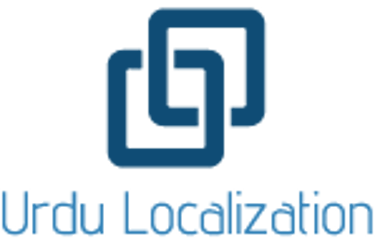
Mastering Urdu Translation: The Role of Dialects
3 min read

Introduction:
When it comes to translating content into Urdu, it’s not just about converting words from one language to another. The richness of the Urdu language includes a variety of regional dialects, each with its own unique features. In countries like Pakistan and India, where Urdu is widely spoken, these dialects play a significant role in shaping how people communicate. Understanding these dialects is essential when translating content to ensure that it resonates with different audiences. In this blog, we explore the importance of recognizing regional dialects in Urdu translation and how businesses can tailor their messaging for specific regions to improve engagement and authenticity.
1. The Diversity of Urdu Dialects
Urdu, as a language, is not monolithic. There are distinct dialects spoken in different regions, such as the Lahori dialect in Pakistan, Dakhini Urdu in parts of South India, and the Khariboli dialect in Northern India. Each dialect has its own unique vocabulary, expressions, and pronunciation. For example, a phrase commonly used in Lahore might be unfamiliar or even sound out of place in Hyderabad (India). Failing to account for these differences can result in content that feels generic or disconnected from its intended audience.
2. How Dialects Impact Communication
The local dialect carries with it a sense of identity and belonging. When communicating in a specific dialect, it helps establish a personal connection with the audience. A business that recognizes and uses the local dialect in its marketing, content, and customer service can create a deeper sense of trust and loyalty. For instance, using more casual and colloquial expressions may be more effective for younger audiences in urban areas, while formal, literary Urdu may work better for more traditional or older demographics.
3. The Role of Dialect in Advertising and Marketing
When designing marketing materials or advertisements for Urdu-speaking audiences, it’s crucial to adapt the language to the region. A campaign targeted at an audience in Lahore might use a mix of formal and colloquial Urdu, while one aimed at an audience in Delhi might incorporate more of the Hindi-Urdu blend. Ignoring these subtleties can lead to a lack of resonance, or worse, alienation of your audience. The more localized your content, the more likely it is to build an authentic connection with potential customers.
4. Enhancing User Experience with Region-Specific Dialects
For businesses with digital products such as websites or apps, the user interface (UI) should reflect the local dialects to create a smoother experience. When users feel that the content speaks directly to them in their familiar regional dialect, it boosts engagement. This includes everything from the tone of voice used in calls-to-action to how help and support are provided. Even the smallest adjustments—such as using regional expressions or avoiding terms that sound overly formal or foreign—can improve user satisfaction and make the content feel more personal.
5. The Risks of Overlooking Dialects in Translation
Overlooking regional dialects in Urdu translation can result in serious missteps. For example, translating content using a standard version of Urdu might not fully reflect the nuances or regional preferences of the target audience. Moreover, using a dialect that doesn’t align with the audience’s expectations can lead to confusion, misinterpretation, or even a negative perception of the brand. Additionally, this oversight could result in the loss of cultural significance, as some phrases or expressions in one dialect may not be understood, or may even have a completely different meaning, in another.
6. How Professional Urdu Translators Address Dialectal Differences
Professional Urdu translators and localization experts are skilled at recognizing these dialectical differences and incorporating them into the content. Whether working on a website, an advertisement, or a product description, professional translators will ensure that the content feels locally relevant. They will also understand the importance of not only translating the language but adapting the message to align with the specific cultural context of the region.
7. How to Choose the Right Dialect for Your Audience
When localizing content for Urdu-speaking markets, businesses must make decisions about which dialect to use. This depends on several factors, such as the geographic location of your target audience, the formality of your brand, and the nature of your product or service. Research is key here—using customer data, understanding regional preferences, and consulting native speakers can help ensure that your content is well-received and relevant.
Conclusion:
The importance of understanding regional dialects in Urdu translation cannot be overstated. A tailored approach that considers dialectical differences ensures that your content is not only accurate but also relatable and culturally sensitive. Whether you're marketing a product, localizing a website, or creating an ad campaign, acknowledging and adapting to the dialects spoken by your target audience will help you build stronger connections and achieve greater success in the Urdu-speaking market.
